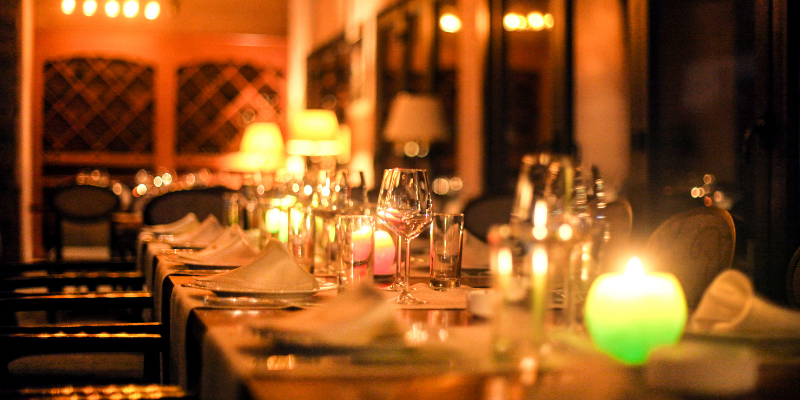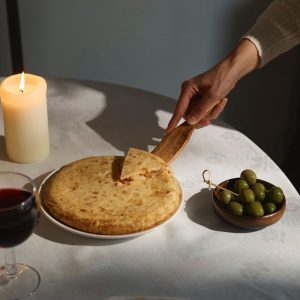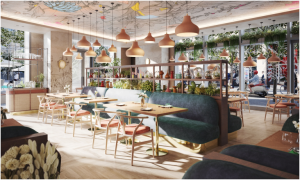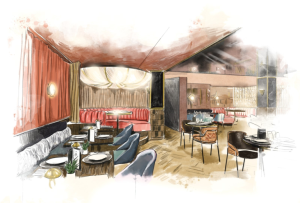


From a Fitzrovia restaurant devoted to Spanish tortillas to a fin-to-gill Greek seafood spot in Marylebone, this June is set to see several enticing London openings.

You’ve heard of nose-to-tail eating, but what about fin-to-gill? Andreas Labridis and Nikos Roussos, the Hellenic duo behind OPSO, INO and Pittabun, are heading to Marylebone to open a spot that gives a marine twist to the ‘waste not want not’ school of cookery. Diners entering the 30 cover restaurant are greeted with a counter bearing the catches of the day and choose what they want to eat. After this rather morbid introduction, they are then served a Greek-inspired series of dishes that make use of every bit of the fish. You may wish to gnaw on a lightly-fried tail with aioli, or consume the shank of a grouper. For those desiring some turf with a splash of surf, the rack of lamb served with a bisque demi-glace. Dessert also follows the seafood theme, with a twisted baklava that substitutes the filo pastry for nori sheets. To pair, Labridis has curated a predominantly-Greek wine list, with a range of Champagnes also available.

After three years of renovations, the long-awaited reopening of The National Portrait Gallery in late June is not just good news for art enthusiasts – there’s also a gastronomic draw to the gallery. Acclaimed chef Richard Corrigan will be heading up the eatery overlooking Trafalgar Square. Expect Bentley’s soda bread, a nod to Corrigan’s Celtic roots, and, his personal favourite, the oyster croque monsieur (for which the serving suggestion is “a glass of something chilled and fizzy”). The set lunch menu is something of a steal, starting at £29 for two courses. A unique take on high tea and a chef’s counter are also teased.

It is, as a matter of fact, pretty much impossible to make an omelette without breaking at least some eggs. While some may shy away from this, Broken Eggs on Foley Street embraces this inescapable reality with gusto. The Spanish tortillas it serves appear to be aggressively traditional, consisting of eggs, potatoes, olive oil and salt, but those who have tasted a good rendition of this Iberian tapas classic will know that it is a dish that is greater than the sum of its parts. Chorizo and courgette-enhanced versions are also available. Judging by Instagram, the omelettes are very much on the baveuse side, which may well be divisive (one man’s pleasantly runny is another’s undercooked). Beyond los huevos, there are also meats, cheeses and pan con tomate.

Coming to Canary Wharf’s Wood Wharf, this will be the second site for 100% plant-based restaurant Mallow, following on from its Borough Market joint which opened two years ago. Capable of holding 100 covers inside, an outside terrace can seat a further 50. Sarah Wasserman, head of food development for Mallow and Mildreds, has developed a menu that combines some of the classics from the Borough site, but with a few new dishes, including spinach dahi puri (served with lime, coconut sambol & blackcurrant-tamarind churtney) and aubergine muhamammara borek (with green tabouleh, smoked aubergine cream & ezme). There’s also a specific onion and garlic-free menu of dishes with an absence of the aromatic alliums. In addition to cocktail, vegan wines and beers are also on the drinks menu. The wine list features producers from across the world, including bottles from the likes of Domaine Alain Michelot in Burgundy and Marlborough’s Wairu River.

A rather far cry from being 100% plant-based, Argentinian-style steakhouse chain Gaucho will be opening its first new London restaurant in over a decade, having also opened sites in Newcastle and Cardiff this year. Within earshot of the Royal Opera House, but with its heart in Buenos Aires, Gaucho boasts of a 1930s-inspired subterranean speakeasy tucked beneath the ground floor restaurant. Black Angus cattle have, perhaps involuntarily, provided the steaks, and other Latin American dishes, including empanadas and sea bass ceviche also adorn the menu. While the wine list is international, beef’s naturally bedfellow of Malbec is especially well-represented, with expressions from the north of Argentina, through Mendoza, and all the way down to Patagonia.